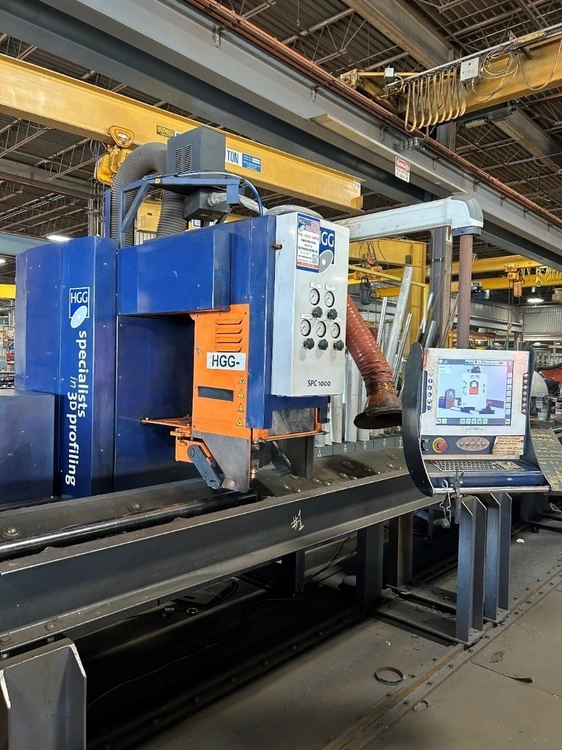02/08/2024
What are the Technical Details to be considered before buying a CNC Pipe Profiling Machine?
When considering the purchase of a CNC Pipe Profiling Machine, there are numerous technical details and features that need to be evaluated to ensure the machine meets your specific requirements and provides the desired performance and efficiency. Below is an extensive list of at least 50 technical details to consider:
1. Machine Type:
- CNC type (e.g., plasma, laser, waterjet)
2. Cutting Capacity:
- Maximum pipe diameter
- Minimum pipe diameter
- Maximum pipe wall thickness
- Minimum pipe wall thickness
3. Machine Dimensions:
- Overall machine dimensions (length, width, height)
- Weight of the machine
- Footprint required
4. Cutting Length:
- Maximum pipe length that can be handled
- Minimum pipe length that can be processed
5. Material Compatibility:
- Types of materials that can be cut (e.g., steel, stainless steel, aluminum, etc.)
- Material hardness limits
6. Power Requirements:
- Electrical supply (voltage, phase, frequency)
- Power consumption
7. Cutting Speed:
- Maximum cutting speed
- Adjustable cutting speeds
8. Accuracy and Precision:
- Cutting tolerance
- Repeatability
9. Cutting Angles:
- Range of angles that can be cut
- Ability to cut complex shapes and angles
10. Tooling:
- Types of cutting tools used
- Tool change capabilities
- Tool lifespan
11. Control System:
- Type of CNC control system (e.g., brand, model)
- User interface (touchscreen, buttons)
- Software compatibility
12. Programming:
- Programming language supported (G-code, proprietary software)
- Offline programming capability
- Importing CAD/CAM files
13. Motion System:
- Type of drive system (servo, stepper motors)
- Number of axes
- Linear guides and bearings used
14. Clamping System:
- Type of clamping mechanism (hydraulic, pneumatic, mechanical)
- Adjustability for different pipe sizes
- Stability and grip strength
15. Cooling System:
- Type of cooling (air, liquid)
- Cooling capacity
- Maintenance requirements
16. Exhaust and Filtration:
- Fume extraction system
- Filtration system for cutting byproducts
17. Lubrication System:
- Type of lubrication (manual, automatic)
- Lubrication points and intervals
18. Safety Features:
- Emergency stop buttons
- Safety guards and interlocks
- Compliance with safety standards
19. Machine Build:
- Frame construction material
- Vibration damping mechanisms
- Corrosion resistance
20. Software Features:
- Nesting software for material optimization
- Simulation software for cutting path verification
- Real-time monitoring and diagnostics
21. Automation:
- Level of automation (manual, semi-automatic, fully automatic)
- Integration with automated loading/unloading systems
22. Maintenance:
- Ease of maintenance
- Availability of spare parts
- Scheduled maintenance requirements
23. Installation and Training:
- Installation services provided by the manufacturer
- Operator training programs
24. Warranty and Support:
- Warranty period and coverage
- Technical support availability
- Service contracts
25. Environmental Considerations:
- Noise level during operation
- Energy efficiency
- Environmental impact of cutting processes
26. Cost:
- Initial purchase cost
- Operating costs (consumables, power, maintenance)
- Cost of replacement parts
27. Production Volume:
- Machine suitability for the intended production volume
- Cycle times
28. Flexibility:
- Ability to handle a wide range of pipe sizes and materials
- Adaptability for future production needs
29. Delivery Time:
- Lead time for machine delivery
- Shipping and logistics considerations
30. User Feedback:
- Reviews and feedback from other users
- Performance history of the machine
31. Brand Reputation:
- Manufacturer’s reputation in the market
- Track record of reliability and performance
32. Integration:
- Compatibility with existing production lines and systems
- Ease of integration with other equipment
33. Upgradability:
- Potential for future upgrades
- Modular design for adding new features
34. Consumables:
- Availability and cost of consumables (cutting nozzles, electrodes, etc.)
- Consumable lifespan
35. Calibration:
- Calibration frequency and ease
- Tools and methods for calibration
36. Cut Quality:
- Surface finish of the cut edges
- Minimal dross and burrs
37. Operator Interface:
- Ergonomics of the control panel
- Ease of use and operator comfort
38. Network Connectivity:
- Ability to connect to networks for data transfer
- Remote monitoring and diagnostics
39. Backup and Recovery:
- Data backup procedures
- Recovery options in case of control system failure
40. Regulatory Compliance:
- Compliance with local and international standards
- Certifications (CE, ISO, etc.)
41. Heat Affected Zone (HAZ):
- Minimization of HAZ during cutting
- Techniques to control thermal effects
42. Material Handling:
- Ease of loading and unloading pipes
- Handling systems for long or heavy pipes
43. Cycle Time:
- Average cycle time for different pipe sizes and thicknesses
- Factors affecting cycle time
44. Data Management:
- Storage and retrieval of cutting programs
- Data logging and reporting features
45. Scalability:
- Ability to scale production with additional machines
- Scalability of software and control systems
46. Temperature Control:
- Temperature stability during operation
- Impact of ambient temperature on machine performance
47. Redundancy:
- Redundant systems for critical components
- Fail-safe mechanisms
48. Delivery and Setup:
- Delivery options and logistics
- Setup and commissioning process
49. Documentation:
- Comprehensive manuals and documentation
- Availability of detailed schematics and part lists
50. Customization:
- Options for customizing the machine to specific needs
- Custom fixtures and tooling
By carefully evaluating these technical details, you can ensure that the CNC Pipe Profiling Machine you choose will meet your production requirements, provide high-quality results, and offer reliable performance over the long term.


